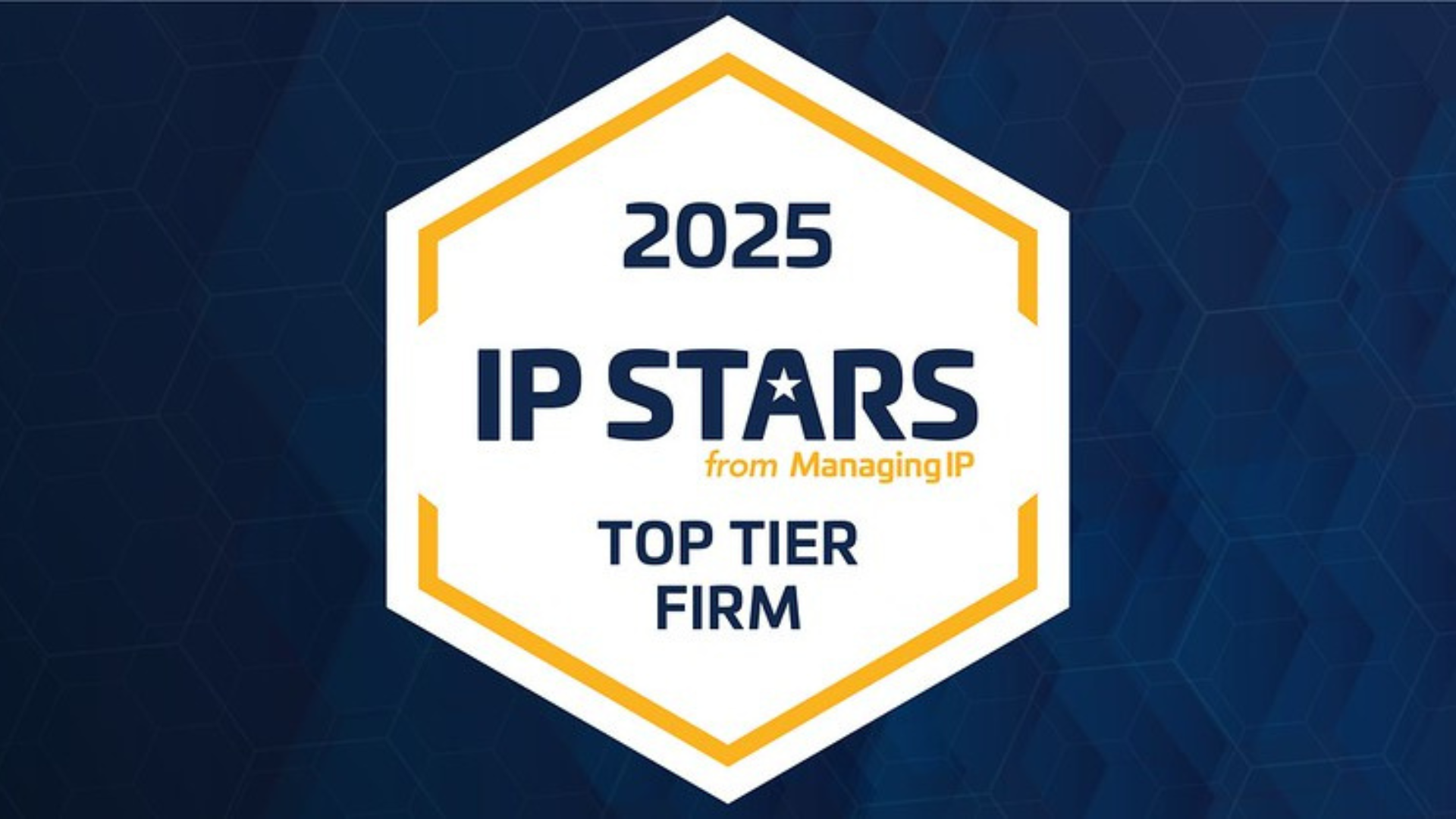Healthcare Scanner
The EPO ‘How To’ guide for antibody applications in Europe
Juni 2021
The 2021 EPO Guidelines provide much needed guidance on how to protect antibodies in Europe.
Biological drugs including therapeutic antibodies have become increasingly important to the pharmaceutical industry. The European Patent Office receives large numbers of patent applications in this field, yet examination can often be difficult for these filings. There is an increased need for applicants to understand the challenges specifically associated with the patentability of antibodies. In addition, European patent attorneys have been asking for some formal guidance on the subject beyond relying on their own experience and knowledge of case law to navigate somewhat inconsistent prosecution. Thankfully, in the 2021 edition of the Guidelines, the EPO has now issued formalised guidelines on approaching antibody patent applications which are available for attorneys and applicants alike.
Defining Antibodies in Patent Claims
The new EPO Guidelines for Examination (issued March 2021) include a dedicated section to the subject matter of antibodies (G.II.5.6) which can be found here. To assist applicants, the guidance issued by the EPO sets out the various ways in which one can draft patentable claims to protect an antibody.
Antibodies can be defined:
- Structurally
- By the target antigen
- By the target epitope
- Functionally (in combination with any of the above)
- By claiming the antibody producing hybridoma cell
- By the production process and the resultant product.
The key points to remember when drafting antibody claims are that the structure must usually be defined by reference to all six CDR sequences, unless the antibody can be defined by reference to a novel target antigen or epitope. When using either a structural or target based definition, further functional features can be added to distinguish the antibody from known similar antibodies. Inventive step can be a high hurdle to overcome, as structural non-obviousness will not suffice on its own. Including as much data as possible in the application will help demonstrate a technical effect for the novel antibody.
Defining antibodies structurally is arguably the most common way for an applicant to cover a novel antibody product. However, the EPO has become quite strict as to what sequences of the novel antibody must be present in the claim. Currently, it is required that all six CDR sequences are provided in the claim, or are defined as being part of larger defined variable region sequences using an approved numbering scheme such as Kabat, Chothia or IMGT, which must be recited in the claim. A typical claim format would be: “An antibody binding to X which comprises HCDR1, HCDR2, HCDR3, LCDR1, LCDR2 and LCDR3 sequences of SEQ ID numbers: 1, 2, 3, 4, 5, 6”. The sequence requirements can sometimes be overcome if data is provided in the application to show that not all CDRs are required to interact with the epitope of the antigen. In that case, the claim can be broader, and perhaps define fewer than six CDR sequences. It is also possible to circumvent the requirement of 100% sequence identity for all six CDRs or variable domains if the sequence definition is combined with a clear functional feature. This approach allows some sequence variation within the claim, and is thus less limiting than defining the antibody exclusively by structure, so long as the functional features defined correspond to the technical effect. The new guidelines have made clear that if it is desired to obtain a claim scope which is broader than specific CDR sequences, then it is vital when drafting the patent application that the specification contains sufficient data to support such scope extending beyond the structure.
An antibody claim can also be directed towards the antigen that the antibody targets, but only if the antigen is novel. A typical claim format would be “An antibody specific for antigen X consisting of SEQ ID NO:Y”. One must define the antigen with no variability. Negative features to exclude certain targets can also be included, for example “Antibody binding to antigen X and not binding to antigen Y”. The view of the EPO is that any open language or sequence variability around the antigen will leave the claim potentially lacking novelty over known antibodies which could bind to the undefined region of the target antigen. Likewise, the antibody can be claimed by defining a specific novel epitope in a target antigen, even in a known antigen. Again, such a claim requires closed language that defines either a linear epitope fragment by sequence, or clearly defines the discontinuous amino acids of a non-linear epitope. Claims based on this format are less common as ‘new’ targets are rare. The application must also provide a clear and enabling disclosure to allow one to determine whether further antibodies bind the same epitope or antigen. The combination of a target definition and a medical use is a more common way to obtain broader antibody coverage under this format, where the target antigen may be known but was not known to be involved in the disease to be treated. For example: “An antibody specific for antigen X consisting of SEQ ID NO:Y for use in the treatment of disease Z”.
Claims covering antibodies defined by their target antigen or epitope can also be combined with further functional features much like structural claims. For example, “An antibody that induces internalisation of receptor Y upon binding to antigen X on the surface of a cell, wherein antigen X consists of SEQ ID NO:Z.” Suitable added functional features which may be used to help define an antibody include: the binding affinity, neutralising properties, induction of apoptosis, internalisation of receptors, inhibition or activation of receptors, for example. However, care must be taken when defining antibodies exclusively by antigen target or epitope, and further functional features. Should the prior art contain an antibody with the same target antigen or epitope using immunisation or screening protocols, the EPO will assume such antibodies will have the same functional features as the claimed antibody and thus fall within the claim.
Finally, it is possible to claim an antibody indirectly. One can claim an antibody by defining the hybridoma producing cell or the process to make said antibody, e.g., immunisation of a non-human animal with a well-defined antigen which would result in production of the antibody. Such a claim may be formatted as “An antibody produced by immunization of a non-human animal with an antigen of SEQ ID NO: X.”. The downside of this approach is the EPO requires that the immunising antigen must have 100% sequence identity to a defined sequence, any variation from this would result in an unclear scope of the claimed antibody. For hybridoma claims, a biological deposit of the hybridoma must be made before the application is filed in accordance with the rather strict rules on deposits.
Many of these individual approaches do force applicants to limit to narrow claims that competitors may easily be able to work around. However, using the formats provided in combination with careful drafting of well-defined functional features, including medical uses, leaves room for broader claims.
Inventive step
In addition to providing guidance on permissible claim formats, the EPO have provided direction on the requirements for effectively demonstrating inventive step (GL.II.5.6.2). The EPO views the antibody field as a mature technology area, and that the skilled person is aware of common techniques to improve antibody properties such as reducing immunogenicity through humanisation. Therefore, to show inventive step, there must be a surprising effect compared to known antibodies such as improved therapeutic activity, or improved affinity. It is on inventive step where most applications experience difficulties, even when they have achieved novelty over the prior art and clarity using an acceptable claim format such as those described above.
The key reason for this is that inventive step will not be recognised for a novel antibody that binds a known antigen on the sole basis that the structure of the new antibody is different from those in the art. So-called structural non-obviousness is not enough to obtain a granted claim in Europe, even though it may well be enough in other countries, and is considered sufficient for chemical structures.
However, if one can show that the novel structure provides an unexpected technical effect, or overcomes difficulties in production of the antibody, then inventive step would be recognised. Ideally, one should demonstrate with data in the application as filed that the antibody binds to the intended target and has its intended biological effect as expected, and furthermore that the antibody has a functional characteristic beyond similar antibodies in the art. This can then be used as a basis to argue for an inventive step. Such further functional characteristics may be those mentioned above, for example improved affinity, improved therapeutic activity, reduced toxicity or immunogenicity or reduced cross-reactivity. However, it is becoming harder to successfully argue that some of these functional effects (such as improved affinity) are non-obvious as improvements like high affinity binding become more commonplace in modern antibodies. This has led to combinations of first and second functional features being included in claims.
Providing as much data as possible is critical in supporting inventive step and also the potential for achieving a broader claim scope. To gain a granted patent, the application must clearly highlight the advantages of the claimed antibody and include data that will allow successful arguments to inventive step objections. Comparative data with known similar antibodies or even the applicant’s own non-preferred antibody candidates can help demonstrate the preferred antibody has properties that go beyond an equally obvious alternative.
Overall, the new guidelines provide help with drafting suitable antibody claim formats which applicants will find useful to reach a patentable claim. The guidelines do not change the EPO’s approach to examining antibody claims. However, they should bring a more consistent and predictable outcome from examiners, which is to be welcomed.
This article was prepared by HGF Patent Director Eleanor Purnell and Trainee Patent Attorney Dr Amy Dawson.































